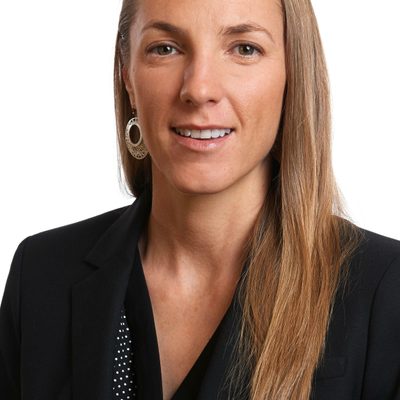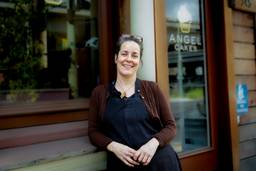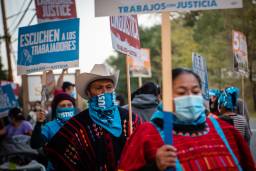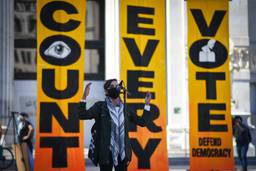Hundreds of Thousands Are Without Power Thanks to PG&E. This Shows Why We Need Public Ownership.
The utility giant’s mass blackouts in California are just the tip of the iceberg.
Brooke Anderson
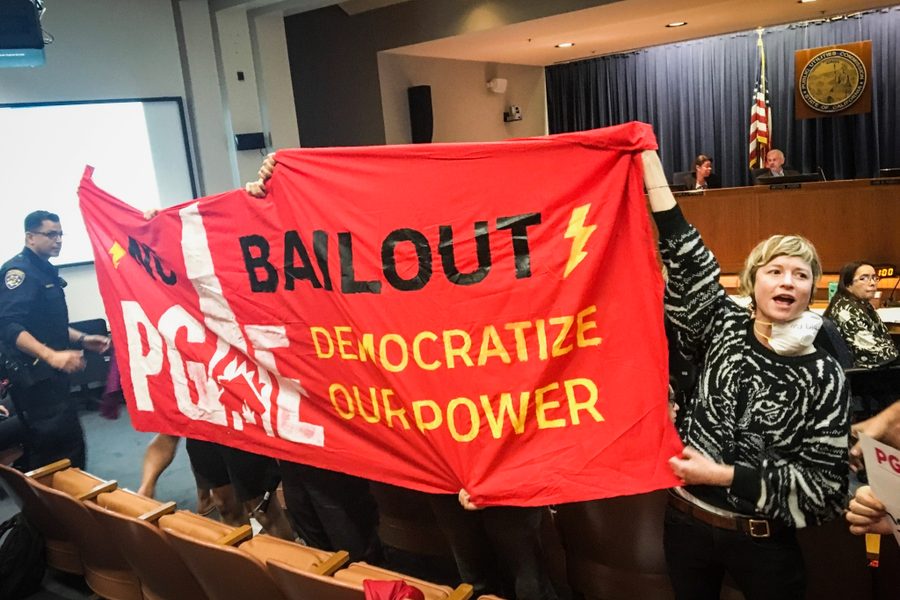
Starting October 9, Pacific Gas & Electric (PG&E), California’s largest power utility, has been inflicting rolling shutoffs of service to an estimated 800,000 customer accounts, in ongoing blackouts that could leave 2 million people without electricity in Northern and Central California. The investor-owned utility said that the shutoff was intended to prevent wildfires during high-wind conditions and could last several days. As food rots in fridges and residents are unsure of how to charge their electric wheelchairs, the blackouts have intensified calls for a public takeover of the for-profit utility.
Public anger is exacerbated by the utility giant’s admitted role in helping unleash the largest wildfires in state history. For years, PG&E repeatedly spent funds earmarked for safety upgrades on its high-voltage transmission line on hefty raises and bonuses for executives instead, leaving dangerously deteriorated power lines throughout the state. The fact that PG&E deferred critical infrastructure maintenance, combined with increasing climate-related drought and diseased forests, helped cause California’s deadliest wildfire in history, the 2018 Camp Fire that killed 86 people. In February, PG&E stated, “the company believes it is probable that its equipment will be determined to be an ignition point of the 2018 Camp fire.”
PG&E is facing $30 billion in liability for its alleged role in that and other recent wildfires. Despite all this, PG&E still hasn’t done the necessary line maintenance to prevent another wildfire. The utility has only completed one third of the tree-trimming work it committed to do this year. Instead, it’s shutting off essential services.
Though PG&E had projected for almost a year that it would need to shut off power during high wind events in order to prevent fires that have resulted from downed power lines, the utility giant had done shockingly little planning. The only source of information, PG&E’s own website, went down almost immediately. Only one emergency resource center with charging stations was established per county, and closes at night. PG&E waited until the last minute — just a day before the shutdown — to publicly announce its plan to keep open one of the area’s largest highways, the Caldecott Tunnel.
Class cleavages
As residents navigate the “new normal” of increasingly powerful wildfires and preemptive power outages, sharp class divides are exposed. When this week’s power shutoff was announced, some residents stocked up on expensive personal generators while others anguished over losing a week’s worth of precious food if refrigerators failed. Leading up to the shutoff, many people with disabilities feared they would be unable to power their breathing machines, recharge electric wheelchairs, refrigerate insulin, or even leave their apartments without elevator service, and were organizing mutual aid networks to provide resources and support.
As the shutoff unfolds, it’s becoming increasingly evident that not all communities have equal access to the resources necessary to care for themselves and their families through the blackout. “As people see the impending apocalypse around us, it becomes clearer that if we can’t readily access the resources for our safety and survival, then we have turned the corner to eco-apartheid,” Michelle Mascarenhas-Swan, a collective member of Movement Generation Justice and Ecology Project, a social movement organization. (Disclosure: This author consults for Movement Generation.) “That’s what eco-apartheid is: shutting down access to resource for some, while others have free reign over those resources.”
“The wildfires and power outages are shocks that change the public discourse from, ‘This is just how it is’ to, ‘Wait, why I am putting my safety in their hands?’” continued Mascarenhas-Swan. “Those questions open up the possibility for more radical shifts. It isn’t tinkering around the edges of the current system, but transforming it.”
Calls for public ownership
Faced with lawsuits for damages of upwards of $30 billion related to their role in the wildfires and other accidents, PG&E filed for bankruptcy earlier this year. California legislators have been considering various bills that could put ratepayers on the hook for PG&E’s past and future wildfire liability, prompting many in the state to ask “What if we just owned PG&E?”
As bailout conversations swirled in Sacramento earlier this year, a “No PG&E Bailout” Coalition emerged, demanding a “public takeover of the monopoly utility’s electricity grid infrastructure.” The formation is calling for joint public-worker ownership, a transition to “a public, democratized clean energy model that supports local Community Choice energy programs,” and a transition for existing workers’ jobs and pensions.
Models for public utility ownership already exist in California. The Los Angeles Department of Water and Power and the Sacramento Municipal Utility District are both publicly owned.
Mari Rose Taruc is the coordinator of the Utility Justice Campaign at the Local Clean Energy Alliance (LCEA), which is a member of the No PG&E Bailout Coalition. For her, the crisis is personal. Her dad, which lives in the PG&E shutoff zone, uses dialysis, and she worries for his health if the electricity is shut off.
“Our utility system has to be more nimble as the climate crisis unfolds,” Taruc tells In These Times. “The conversation shouldn’t just be about making the transmission lines work better. What if we imagined a decentralized energy system where we don’t need transmission lines that catch fire?”
Taruc’s point is not just that PG&E needs to be publicly owned, but also decentralized and based on distributed local power generation. PG&E’s system of massive central coal and gas plants that rely on power lines to move energy across vast swaths of land is both expensive to maintain and dangerous during fire season. Instead, we need to move toward locally-generated solar, wind, and other renewable energy.
While Taruc has been focused on utility justice at the statewide level, the LCEA of which she is part has spent years building models for exactly that kind of decentralized energy generation through community choice energy. Such programs allow cities and counties to choose where their energy will come from, either by purchasing renewable energy on the market or developing their own local renewable energy energy resources. Under the model, incumbent utility companies such as PG&E continue to deliver the energy and service customers. As a result of LCEA’s advocacy, East Bay Community Energy, a local clean energy supplier, was established in 2017 and is moving on a groundbreaking plan for solar, wind, and energy efficiency development in the East Bay.
Public ownership puts the decisions about what kind of energy we use, how it is distributed, in the hands of communities — not corporations. This shift allows communities to prioritize social and ecological wellbeing over pollution and profit — and can be a means of addressing the climate crisis.
The post-disaster effort to pivot from corporate-owned, vulnerable, centralized energy systems to disaster-resilient and locally governed renewable energy is not unique to California. In Puerto Rico, thousands of people were without power for months when the import and distribution of fossil fuels on the island was halted by damage from Hurricane María, and transmission lines and the power grid were damaged. Casa Pueblo in Adjuntas, became a “solar oasis” during the hurricane, distributing 14,000 solar lanterns and is now building energy sovereignty at the local level by creating the island’s first community-controlled solar microgrid.
“We’re calling for an energy insurrection,” said Arturo Massol-Deyá when I visited Casa Pueblo in June. “We’re not going to wait for the government. We’re going to unplug ourselves.”
As municipalities around the world navigate accelerating ecological collapse, the question is not just how do we transition from fossil fuel extraction to renewable energy, but rather: Who owns and governs collective resources — like water and energy — that we need to survive? Will it be large corporations like PG&E, bent on maximizing profit, or local communities with democratic control?
Brooke Anderson is an Oakland, California-based organizer and photojournalist. She has spent 20 years building movements for social, economic, racial and ecological justice. She is a proud union member of the Pacific Media Workers Guild, CWA 39521, AFL-CIO.
